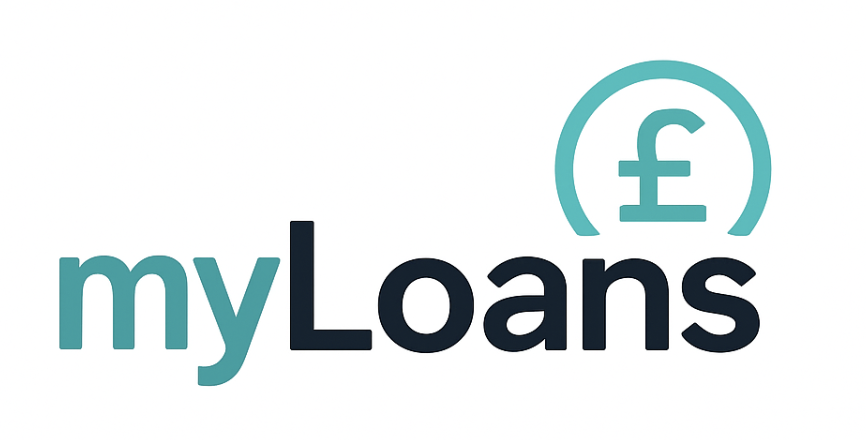Understanding Help to Buy Interest Rates
Buying a home is one of the most significant financial decisions you’ll ever make, and understanding the various schemes available to help you get on the property ladder can be overwhelming. One of these options is the Help to Buy scheme, which has been a popular choice for many prospective homeowners in the UK. But how does the Help to Buy interest rate work, and what do you need to know before you dive in? Let’s break it down with a comprehensive look into every aspect of this scheme.
The Help to Buy scheme is a government-backed initiative aimed at helping first-time buyers and existing homeowners purchase a new-build property. The scheme primarily involves the Help to Buy Equity Loan, which allows buyers to borrow a percentage of the property’s value with a low initial interest rate.
The Help to Buy scheme was introduced to stimulate the housing market and assist those struggling to save a large deposit. Since its inception, it has undergone several changes to adapt to the fluctuating real estate market and economic conditions. Understanding its history can provide insights into its current structure and potential future developments.
The scheme offers numerous benefits, including a lower deposit requirement and access to new-build properties. Buyers can purchase homes with just a 5% deposit, making it more accessible for those who find it difficult to save large sums. Additionally, the focus on new-build properties ensures buyers benefit from modern amenities and construction standards.
Despite its benefits, the Help to Buy scheme is often misunderstood. Some believe it’s only for first-time buyers, while others think it covers any property type. Clarifying these misconceptions is vital to ensure prospective buyers fully understand what the scheme entails and whether it suits their needs.
Under the Help to Buy scheme, the government provides an equity loan of up to 20% (or 40% in London) of the property’s value. This means you only need to secure a mortgage for the remaining 75% (or 55% in London) and a 5% deposit. This makes it easier for buyers to afford a home with a smaller upfront cost.
The equity loan is the cornerstone of the Help to Buy scheme. It allows the government to share in the risk and potential gains of the property market. This partnership approach means buyers don’t need to stretch their finances too thin, allowing them to enter the property market sooner.
Understanding the mortgage and deposit requirements is crucial for participating in the Help to Buy scheme. With only a 5% deposit needed, buyers can focus on securing a mortgage for the remaining amount. It’s essential to compare mortgage options to find the best rates and terms that fit your financial situation.
The introduction of the Help to Buy scheme has had a significant impact on the UK property market. It has increased demand for new-build properties, encouraging developers to invest in construction. However, some argue it may have also contributed to rising property prices, a consideration for potential buyers.
The interest rate on the Help to Buy loan is one of its most attractive features, especially in the initial years. However, it’s crucial to understand how it works over time.
For the first five years, the equity loan is interest-free. This allows you to save or pay off other debts, making homeownership more affordable in the early years. However, planning for the future is essential because the situation changes after this period.
The interest-free period can be a strategic advantage if utilized effectively. Homeowners can focus on reducing other high-interest debts or saving for future expenses. Planning and budgeting during these five years can lay a solid foundation for financial stability.
While the initial interest-free period is beneficial, it can lead to complacency. Homeowners may neglect to plan for the end of this period, resulting in financial strain when interest begins to accrue. Understanding these risks is crucial for long-term financial planning.
The Help to Buy scheme’s interest-free period distinguishes it from other homeownership schemes. Comparing it with alternatives, such as shared ownership, can help potential buyers determine the best fit for their financial situation and homeownership goals.
After the initial five years, interest starts to accrue on the equity loan. The rate begins at 1.75% of the loan’s value and increases annually by the Retail Price Index (RPI) plus 1%. This means your payments will grow over time, making it critical to plan ahead.
The Retail Price Index (RPI) is a measure of inflation that affects the interest rate on the Help to Buy loan. Understanding how RPI works and its historical trends can help you anticipate potential changes in your loan payments over time.
Preparing for increased payments after the interest-free period is essential. Strategies may include overpaying the mortgage, setting aside savings, or considering remortgaging options. Each approach has its advantages and should be evaluated based on individual financial circumstances.
As interest rates increase, the long-term financial implications of the Help to Buy scheme become more apparent. Considering how these changes fit into your overall financial plan is crucial for ensuring sustainable homeownership and avoiding financial distress.
Understanding your future financial commitments is vital. Using a Help to Buy interest calculator can help you predict your monthly payments once interest kicks in. You can find various online calculators to input your loan amount and see how your payments might change.
An interest calculator is a valuable tool for projecting future payments. By inputting your loan details and anticipated interest rates, you can gain insights into potential payment changes. Knowing how to use this tool effectively can enhance your financial planning.
Using an interest calculator allows you to create different financial scenarios based on varying interest rates and loan terms. This foresight can aid in decision-making, helping you prepare for various financial outcomes and adjust your strategy accordingly.
Not all interest calculators are created equal. Comparing different calculators and tools can ensure you get the most accurate and useful projections. Look for calculators that offer detailed breakdowns and consider factors like RPI, loan terms, and additional fees.
Before diving into the Help to Buy scheme, it’s essential to check your eligibility.
To qualify for the Help to Buy scheme, you must:
- Be a first-time buyer or a homeowner looking to move to a new-build property.
- Plan to live in the property, as it cannot be rented out.
- Ensure the property price does not exceed the regional limits set by the government.
The definition of a first-time buyer can vary, affecting eligibility for the Help to Buy scheme. Understanding what qualifies as a first-time buyer and how it impacts your application is crucial for accessing the scheme’s benefits.
Each region in the UK has specific property price limits under the Help to Buy scheme. Familiarizing yourself with these limits ensures you choose a property that qualifies, preventing potential issues during the application process.
The Help to Buy scheme requires that the purchased property be your primary residence. Understanding the implications of this rule and how it affects potential rental or investment plans is vital for maintaining compliance with the scheme’s conditions.
Applying for the Help to Buy scheme involves several steps. First, contact a Help to Buy agent in your area for guidance. You’ll need to provide proof of your eligibility and financial information. Once approved, you can begin the process of securing a mortgage and finalizing your home purchase.
A Help to Buy agent is a valuable resource for navigating the application process. They can provide personalized advice and ensure you meet all necessary criteria. Finding a reputable agent in your area is the first step toward a successful application.
Thorough preparation of financial documentation is essential for a smooth application process. Gathering necessary documents, such as proof of income and identification, ensures you can promptly respond to any requests from lenders or agents.
Once your application is approved, the next steps involve securing a mortgage and completing the property purchase. Working with experienced professionals, like mortgage brokers and solicitors, can streamline this process and help you avoid common pitfalls.
Repaying your Help to Buy equity loan is a crucial part of the process, and understanding the terms can save you from future headaches.
There are several ways to repay your Help to Buy loan:
- Selling your home: When you sell, you’ll repay the loan percentage of the sale price.
- Remortgaging: You can remortgage and increase your mortgage to repay the loan.
- Using savings: If you have enough savings, you can pay off the loan in full.
When you decide to sell your home, the Help to Buy loan must be repaid as a percentage of the sale price. Understanding this process and how it affects your equity and potential profits is crucial for planning a successful sale.
Remortgaging can be an effective strategy for repaying your Help to Buy loan. By increasing your mortgage amount, you can pay off the loan without having to sell your home. This option requires careful consideration of interest rates and mortgage terms.
If you have accumulated savings, paying off the Help to Buy loan early may be a viable option. This approach can save on interest payments over time and increase your home equity, providing greater financial flexibility.
A Help to Buy equity loan repayment calculator can help you understand how much you’ll owe if you sell your home or decide to repay the loan early. This tool considers the increase or decrease in your property’s value, giving you a clearer picture of your financial obligations.
A repayment calculator provides insights into your financial obligations when repaying the Help to Buy loan. Inputting your property’s current value and loan details can help you determine the repayment amount and plan your financial strategy accordingly.
Early repayment of the Help to Buy loan can offer financial benefits, such as reduced interest and increased home equity. Planning for this possibility and understanding the potential costs and savings is essential for informed decision-making.
Property values can fluctuate, impacting the amount owed on the Help to Buy loan. Understanding how these changes affect your repayment obligations can aid in financial planning and prevent unexpected financial burdens.
When taking out a Help to Buy mortgage, it’s essential to consider the rates offered by different lenders. These rates can vary, so shopping around is crucial to find the best deal.
To compare Help to Buy mortgage rates, consider:
- The interest rate offered by different lenders.
- Any additional fees or charges.
- The terms and conditions of the mortgage.
Interest rates play a significant role in determining the overall cost of your mortgage. Comparing rates from various lenders ensures you secure the best deal and minimize long-term financial commitments.
Mortgage agreements may include additional fees, such as arrangement fees or early repayment charges. Understanding these costs and how they affect your financial situation is crucial for making an informed decision.
Each mortgage comes with specific terms and conditions that impact your financial obligations. Evaluating these details, such as repayment flexibility and penalties, ensures you choose a mortgage that aligns with your financial goals.
Comparison websites are valuable tools for finding competitive mortgage rates. By providing side-by-side comparisons of different lenders, these websites simplify the process and help you make an informed decision. Familiarizing yourself with how to use these tools effectively can enhance your mortgage search.
While comparison websites offer initial insights, direct negotiation with lenders can lead to even better deals. Understanding how to negotiate mortgage terms and rates can result in significant savings and more favorable conditions.
The Help to Buy scheme can significantly impact your ability to purchase a home, making it more affordable in the short term and offering a path to homeownership that might otherwise be out of reach.
Some of the key benefits include:
- Lower upfront costs with a smaller deposit.
- Access to new-build properties.
- An initial interest-free period on the equity loan.
The reduced deposit requirement is one of the most significant advantages of the Help to Buy scheme. By lowering the initial financial barrier, more buyers can enter the property market and begin building equity in their homes.
Focusing on new-build properties ensures buyers have access to modern, energy-efficient homes. This focus can lead to lower maintenance costs and enhance the overall living experience, making the Help to Buy scheme an attractive option.
The initial interest-free period provides financial breathing room for new homeowners. By reducing immediate financial pressures, buyers can focus on settling into their new homes and planning for future financial commitments.
While the Help to Buy scheme offers many advantages, it’s essential to consider the long-term implications, such as the increasing interest payments and the conditions tied to the equity loan.
Considering the long-term financial implications of the Help to Buy scheme is crucial for sustainable homeownership. Understanding how interest rates and repayment conditions evolve ensures you are prepared for future financial responsibilities.
Before committing to the Help to Buy scheme, evaluating your financial stability and future income prospects is essential. This assessment helps ensure you can meet future obligations and maintain your quality of life.
The Help to Buy scheme’s focus on new-build properties can influence property values. Understanding how these values may change over time and how they affect your financial strategy is vital for informed decision-making.
If you have questions or need assistance, the Help to Buy telephone number is a valuable resource. They can provide detailed information about the scheme and guide you through the application process.
Accessing reliable information about the Help to Buy scheme is crucial for making informed decisions. Understanding where to find accurate resources and whom to contact ensures you receive the support you need throughout the process.
The Help to Buy scheme offers personalized guidance and support through dedicated agents. Taking advantage of this assistance can simplify the application process and ensure you meet all necessary criteria for a successful application.
The Help to Buy scheme may undergo changes and updates over time. Staying informed about these developments ensures you remain compliant with the scheme’s requirements and continue to benefit from its advantages.
The Help to Buy scheme can be a valuable tool for first-time buyers and those looking to move into a new-build home. Understanding the interest rates and repayment terms is crucial for making an informed decision. By using tools like interest calculators and repayment calculators, you can plan your finances effectively and make the most of this government-backed initiative.
Whether you’re just starting your home-buying journey or looking to understand your future financial obligations, taking the time to research and prepare will ensure you’re ready for the responsibilities of homeownership. With the right approach, the Help to Buy scheme can be a stepping stone to achieving your dream home.
The Help to Buy scheme offers a unique opportunity to embrace homeownership, even for those who might otherwise struggle to enter the market. Understanding its intricacies and preparing for the future ensures you make the most of this opportunity and build a stable financial foundation.
Long-term planning is essential for making the Help to Buy scheme work for you. Considering future financial goals, potential changes in circumstances, and evolving market conditions allows you to adapt and thrive as a homeowner.
Informed decision-making is at the heart of successful participation in the Help to Buy scheme. By leveraging resources, seeking guidance, and planning strategically, you can navigate the complexities of homeownership and secure a prosperous future.
Alternatives to Payday Loans | Safer Borrowing Options
Payday loans are often marketed as a quick fix for cash emergencies, but they are not the only option available. Whether you’re facing an unexpected bill, car repair, or temporary cash shortfall, there are several alternatives to payday loans that may offer lower...
Payday Loans with Bad Credit | Direct Lender Options
If you’ve been refused credit elsewhere and are wondering whether you can still get a payday loan with bad credit, you’re not alone. Thousands of people in the UK search every month for options like “payday loans with bad credit” or “direct lender payday loans”. While...
Personal Loan Debt Consolidation UK – Is It Right for You?
Juggling multiple credit cards, overdrafts, or loans can be stressful and expensive. A debt consolidation loan allows you to combine everything into a single monthly repayment, often at a lower interest rate. In 2025, UK lenders from high street banks to online...
Emergency Loans UK – How to Borrow Fast in 2025
When an urgent expense hits — like car repairs, medical bills, or a broken boiler — quick access to funds can be essential. In 2025, emergency loans in the UK provide a way to borrow fast, with some lenders offering same-day decisions and payouts. This guide explains...
Top 10 Personal Loan Providers UK 2025 – Rates, Features & Eligibility
The UK personal loan market in 2025 offers more choice than ever, with banks, supermarkets, online lenders, and credit unions all competing for borrowers. The best deal for you depends on your credit score, loan size, and repayment term — but comparing providers side...
Best Debt Consolidation Loans UK 2025 | Top Options
Managing multiple debts can feel overwhelming, especially with credit cards, overdrafts, and personal loans all charging different interest rates. A debt consolidation loan can simplify your finances by rolling everything into one fixed monthly repayment — often at a...
Best Bad Credit Loans UK 2025 – Top Lenders Compared
Having a poor credit score, CCJs, or past defaults doesn’t mean borrowing is out of reach. In 2025, several UK lenders specialise in products designed for people with bad credit — offering smaller loans, flexible repayment terms, and eligibility checks that won’t harm...
Home Repair Loans UK – How to Cover Unexpected Costs in 2025
A leaking roof, broken boiler, or urgent plumbing issue can quickly turn into an expensive problem — often when savings aren’t available. In 2025, home repair loans in the UK provide a way to spread the cost of essential fixes into manageable monthly repayments. This...
Green Energy Loans UK – How to Finance Eco-Friendly Home Improvements in 2025
Eco-friendly upgrades such as solar panels, insulation, heat pumps, and EV chargers can cut energy bills and boost property value — but they require a significant upfront investment. In 2025, green energy loans in the UK provide a way to spread the cost of sustainable...
Moving House Loans UK – How to Cover Relocation Costs in 2025
From deposits and removal vans to solicitor fees and new furniture, moving house in the UK can quickly add up to thousands of pounds. Not everyone has savings set aside to cover these costs upfront. In 2025, moving house loans in the UK provide a way to spread...
Education Loans UK – How to Fund Studies and Professional Courses in 2025
Not all education in the UK is covered by government student finance. Postgraduate degrees, professional qualifications, and private training often require self-funding — with tuition fees and course costs running into thousands of pounds. In 2025, education loans in...
Holiday Loans UK – How to Spread the Cost of Travel in 2025
Holidays can be some of the most rewarding experiences of the year, but they often come with a price tag that’s hard to cover upfront. From flights and hotels to all-inclusive packages and once-in-a-lifetime trips, the costs can add up quickly. In 2025, holiday loans...
Best Personal Loans UK 2025 – Top Lenders Compared
The UK personal loan market in 2025 is more competitive than ever, with high street banks, supermarkets, online lenders, and credit unions all offering products to suit different needs. Choosing the right provider can save you hundreds in interest and ensure...
Medical Loans UK – How to Finance Healthcare Costs in 2025
While the NHS covers most essential treatment, waiting lists, private care, and specialist procedures mean many people face out-of-pocket medical expenses. From dental work and fertility treatment to cosmetic surgery and urgent private healthcare, costs can run into...
Car Loans UK – Personal Loan vs Hire Purchase vs PCP in 2025
Buying a car in 2025 usually means more than just choosing the right vehicle — it also means deciding how to pay for it. In the UK, the three main options are a personal loan, hire purchase (HP), or personal contract purchase (PCP). Each has its own advantages,...
















